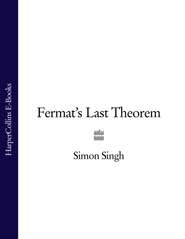По всем вопросам обращайтесь на: info@litportal.ru
(©) 2003-2024.
✖
Big Bang
Автор
Год написания книги
2018
Настройки чтения
Размер шрифта
Высота строк
Поля
At the heart of Einstein’s new approach was his discovery that both distance and time are flexible, which was a consequence of his special theory of relativity. Remember, Bob sees a clock slowing down and Alice getting thinner as they move towards him. So time is flexible, as are the three dimensions of space (width, height, depth). Furthermore, the flexibility of both space and time are inextricably linked, which led Einstein to consider a single flexible entity known as spacetime. And it turned out that this flexible spacetime was the underlying cause of gravity. This cavalcade of weird flexibility is undoubtedly mind-bending, but the following paragraph provides a reasonably easy way to visualise Einstein’s philosophy of gravity.
Spacetime consists of four dimensions, three of space and one of time, which is unimaginable for most mortals, so it is generally easier to consider just two dimensions of space, as shown in Figure 23. Fortunately, this rudimentary spacetime illustrates many of the key features of authentic spacetime, so this is a convenient simplification. Figure 23(a) shows that space (and indeed spacetime) is rather like a piece of stretchy fabric; the gridlines help to show that if nothing is occupying space, then its ‘fabric’ is flat and undisturbed. Figure 23(b) shows how two-dimensional space changes severely if an object is placed upon it. This second diagram could represent space being warped by the massive Sun, rather like a trampoline curving under the weight of a bowling ball.
In fact, the trampoline analogy can be extended. If the bowling ball represents the Sun, then a tennis ball representing the Earth could be launched into orbit around it, as shown in Figure 23(c). The tennis ball actually creates its own tiny dimple in the trampoline and it carries this dimple with it around the trampoline. If we wanted to model the Moon, then we could try to roll a marble in the tennis ball dimple and make it race around the tennis ball, while the tennis ball and its dimple raced around the hollow caused by the bowling ball.
Figure 23 These diagrams are two-dimensional representations of four-dimensional spacetime, ignoring time and one space dimension. Diagram (a) shows a flat, smooth, undisturbed grid, representing empty space. If a planet were to pass through this space, then it would follow a straight line.
Diagram (b) shows space warped by an object such as the Sun. The depth of the depression depends on the mass of the Sun.
Diagram (c) shows a planet orbiting the depression caused by the Sun. The planet causes its own little depression in space, but it is too small to be represented in this diagram because the planet is relatively light.
In practice, any attempt to model a complicated system on a trampoline soon breaks down, because the friction of the trampoline fabric disturbs the natural movement of the objects. Nevertheless, Einstein was arguing that exactly these sorts of trampoline effects were really happening in the fabric of spacetime. According to Einstein, whenever physicists and astronomers witnessed phenomena involving the force of gravitational attraction, they were actually seeing objects reacting to the curvature of spacetime. For example, Newton would have said that an apple fell to Earth because there was a mutual force of gravitational attraction, but Einstein now felt that he had a deeper understanding of what was driving this attraction: the apple fell to Earth because it was falling into the deep hollow in spacetime caused by the mass of the Earth.
The presence of objects in spacetime gives rise to a two-way relationship. The shape of spacetime influences the motion of objects, and at the same time those very objects determine the shape of spacetime. In other words, the dimples in spacetime that guide the Sun and the planets are caused by those selfsame Sun and planets. John Wheeler, one of the leading general relativists of the twentieth century, summed up the theory with the dictum ‘Matter tells space how to bend; space tells matter how to move.’ Although Wheeler sacrificed accuracy for snappiness (‘space’ should have been ‘spacetime’), this is still a neat summary of Einstein’s theory.
This notion of flexible spacetime may sound crazy, but Einstein was convinced that it was right. According to his own set of aesthetic criteria, the link between flexible spacetime and gravity had to be true, or as Einstein put it: ‘When I am judging a theory, I ask myself whether, if I were God, I would have arranged the world in such a way.’ However, if Einstein was to convince the rest of the world that he was right, he had to develop a formula that encapsulated his theory. His greatest challenge was to transform the rather vague notion of spacetime and gravity described above into a formal theory of general relativity, set in a rigorous mathematical framework.
Вы ознакомились с фрагментом книги.
Приобретайте полный текст книги у нашего партнера:
Приобретайте полный текст книги у нашего партнера:








